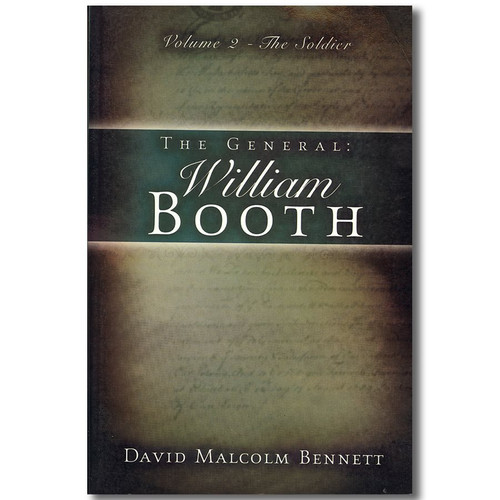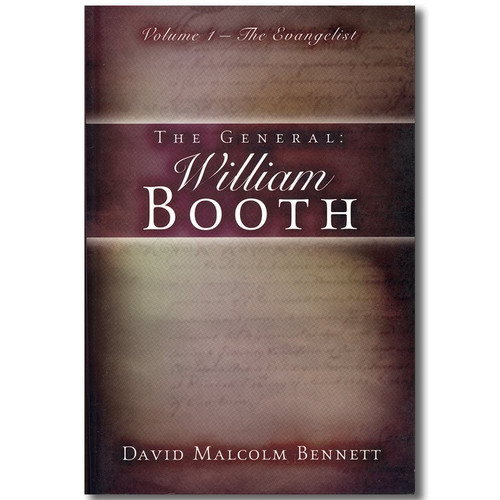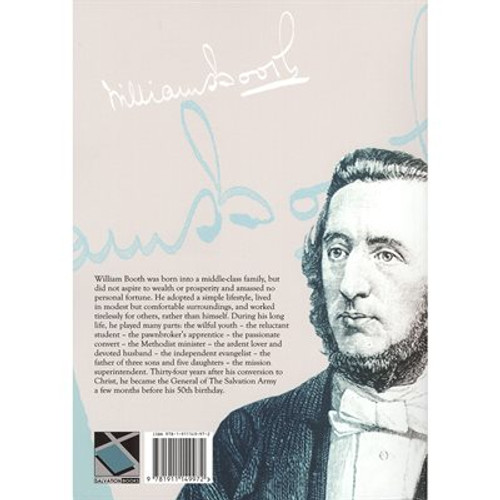Product Description
General William Booth Enters Info Heaven
Band, Narration, Vocal
Composer: William Himes
Produced by The Salvation Army - Central Territory
Score Sample
NotesThis is a digital product. After purchasing you'll be able to download it from Account -> Orders -> Select order number
Score Notes
Notes:
This unique work for band and narrator (and optional dance troupe, soprano soloist and choir) was written in honor of General John Gowans, the 16th world leader of The Salvation Army and one of its finest orators. This "theater piece" was premiered with the General and Chicago Staff Band in June 12, 1999 at a Festival of Gospel Arts in metropolitan Chicago sponsored by the USA Central Territory.
Careful consideration of each performance element will help gain an understanding of this piece and its many performance possibilities:
Narrator- Essential to the performance. A comprehensive script is provided which includes rehearsal numbers, dramatic and staging suggestions. Because of the complex nature of the score, this narration should not be attempted without a good microphone and effective amplification.
Band- Also essential for live performance. Although it is possible to use the performance CD accompaniment track provided for live recitation with the recorded performance. This is a challenging and exciting score, abounding in colorful effects and rhythmic interest, requiring a full battery of percussion.
Ballet Sequence- While not essential for performance, there is no question the ballet sequence found in bars 55-132 is a great enhancement to the overall effect. This dance episode can feature any number of dancers dressed in drab costume depicting street people (""drabs from the alleyways and drug fiends pale"") who are eventually transformed- in dress and manner- when the music gives clear reference to the song ""Are you washed in the blood of the Lamb?"" beginning at bar 111. Dancers make a quick exit with the sudden change of mood (and reappearance of the narrator) at bar 132.
Optional Cut: The ballet sequence/band interlude can be cut by taking an immediate segue from bar 54 to 132.
Soprano vocal solo- While the solo rendering of the song, "Have you been to Jesus for the cleansing power?" would be most effective as a soprano vocal solo, the cued solo line in solo horn and flugel at bar 186 is also quite convincing.
Optional Choir/Audience Participation - An SATB choral part has been provided to accommodate an added enhancement to performance. However, it can also be just as impactful to provide song text in printed program or video media and invite the audience to join in the singing of this familiar tune. (The conductor is reminded of the extended final phrase of the last chorus.)
Program Note:
A dramatic work for narrator and band, inspired by the performance of John Gowans, 16th General of The Salvation Army. Featuring Vachal [sic] Lindsay's immortal poem of 1912, this theater piece is based on the 19th century gospel song, "Have you been to Jesus for the cleansing power?"
Program Note:
This colorful selection uses three songs of contrasting idiom to portray a progression of the human condition from despair to triumph:
Although this is a more extended work (approximate duration: 9:00), the inclusion of optional introductions and endings provides added usefulness of presenting singular performances of these three songs as follows:
Sometimes I feel like a motherless child: Beginning to optional ending at bars 39-40.
Reach out and touch: Bar 42 to optional ending at bars 110-113.
Storm the forts of darkness: Begin with snare drum roll (can be a pause) one beat before 117. Play to end as written.
Program Note:
This beautiful setting for solo trombones and band of the folk song O Waly, O Waly is often associated with the words of Isaac Watts:Note to the Conductor:
We are pleased to present this sensitive setting as it was initially conceived for solo trombone. Written for the Amsterdam Staff Band's 2005 tour of the United Kingdom, it was later adapted as a feature for trombone ensemble, at the request of Salvationist Publishing & Supplies, where it appears in 2009 as General Series 2059.
We are grateful to SP&S for kindly giving permission to publish this solo version in the American Festival Series. Of this work, the arranger, Olaf Ritman writes: "I consider this song my personal testimony."
Beginning to bar 12: The accompaniment, particularly at the opening and closing of the piece, is atmospheric, with suspended muted chords supporting the rubato trombone solo. The judicious use of percussion (chimes, bass drum and suspended cymbal) will add to the color and mood. Be sure to cue the chimes at bars 3 and 6.
at bar 4, a clear downbeat cure for the bass drum will help clarify tempo following the soloist's pause. Also give attention to the muted sforzando in cornets and trombones in bar 8.
Bars 13-52: Following the ritardando at bar 12, it is essential for the conductor to establish the correct tempo at bar 13, allowing the soloist lyrical freedom and the ability to sustain long phrases as the tune begins at bar 16. The descending scale gesture at bar 39 should be measured, yet not overstated.
Bars 53-74: There is a slight slowing of tempo as soprano, flugel and horns take the theme while cornets, trombones and euphonium adding countermelody.
Bars 75 to end: Returning to the opening tempo, it will again be helpful to give clear cues for the chimes, bass drum and triangle from bars 75 to the end.
[Note: This solo can be heard on the Chicago Staff Band recording,Kurios, performed by Brett Tolcher]
Program Note:
The tune Randolph, by preeminent English composer Ralph Vaughan Williams was first published in 1906 as a setting of Jeremiah Rankin's hymn, of which the first verse reads:
Note to the Conductor:
William Gordon's stunning four verse setting of Randolph progresses from the quiet simplicity of unison cornets and with each succeeding verse builds to a magnificent organ-like finale.
Gratitude is expressed to the publisher and copyright holder, Oxford University Press, for granting permission to publish this brass setting in the American Festival Series.
Beginning to bar 9: A ceremonial snare drum roll is the sole accompaniment to the cornets opening unison rendering of the tune.
Bar 10-17: The mellow instruments (flugel, horns, baritones and euphoniums) provide a beautiful change of color here with 2nd horn, baritones and euphonium seamlessly adding harmony.
Bars 18-26: A two beat snare and bass drum roll signals the entrance of the cornets and trombones in a more brilliant third verse setting. Here the bass trombone is essential (cued in Eb bass). Bring out the rising soprano cornet line from bar 22.
Bar 27 to end: A dramatic percussion roll precedes the "open pipes" organ like sounds of the final verse at bar 27. Be sure to observe the swell in bar 30, followed by a dramatic decrescendo before building to the final climatic chords. Avoid any tendency to overblow while striving for the full sonorities of this majestic finale.
[Note: this setting is especially effective when performed as a benediction "in the round" with players grouped by sections surrounding the audience.]











